This is the text of my presentation to the European Bamboo Expo in Dortmund on 2 June 2023
Bamboo in China
When I lived and worked in China, I saw what large bamboo forests look like. China has more than 3 million hectares of natural bamboo forests, and this is the habitat of the giant panda, the red panda and many other, less iconic species.
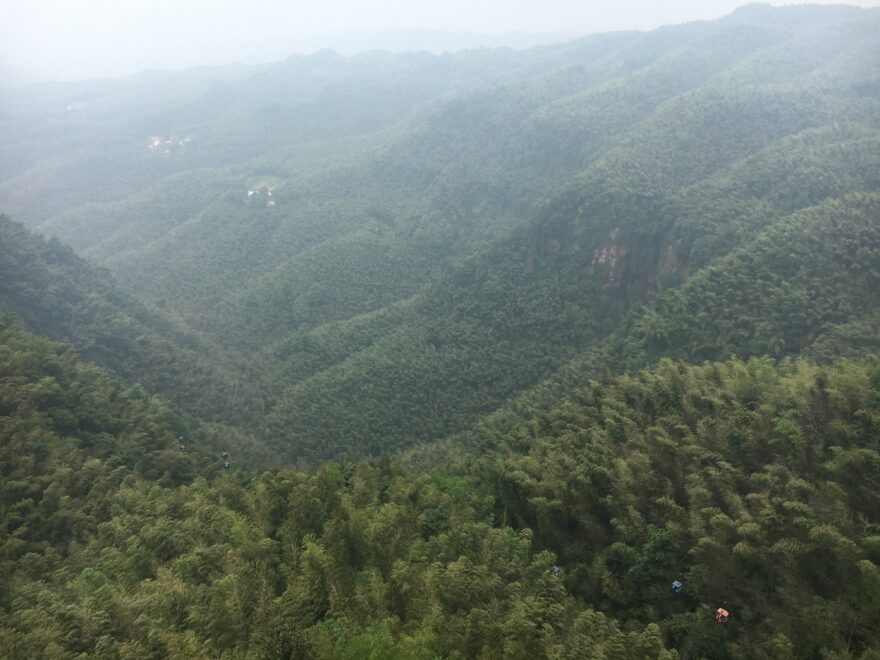
Bamboo Sea in Yibin, Sichuan Province
China also has 3 to 4 million of planted bamboo – planted with two main objectives. There was a concerted effort in the last decades of the twentieth century to stop erosion and halt the growth of the Gobi Desert. Farmers were paid to plant trees through the so-called “grain for green” programme. Bamboo was one of the species included in this reforestation effort.
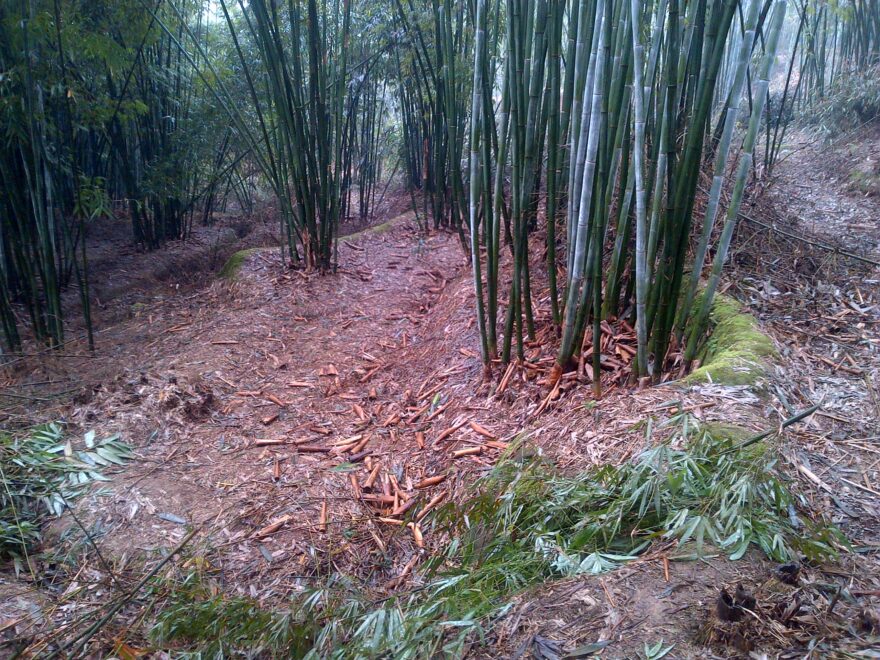
Bamboo planted on former agricultural terraces – Guizhou Province
The other reason was to kick-start an economic development programme, based on the harvesting of bamboo and production of a large range of bamboo products. Today, China manufactures an immense variety of bamboo products with a total value of more than 60 Billion US Dollars per annum. Most of these products are sold within the country, but there is also an international trade in bamboo products. The main overseas markets for bamboo goods from China are Europe and the USA.

2019 Export – Import data from INBAR Trade Overview 2019
Planting bamboo in Europe
This obvious market potential, combined with the recent move to green growth in Europe, and the need for the agricultural sector in southern Europe to diversify, was our main reason for launching the European Bamboo Programme a few years ago. An added reason is that the carbon footprint of goods made from bamboo grown in Europe is much lower than that in goods imported from the other end of the world.
We are starting our work in Portugal, where we are planting bamboo on degraded, unproductive agricultural land. We have an area of 150 Hectare in Alcoutim in southern Portugal, on the border with Spain. So far, one third is planted, and we will cover the whole area in the coming years.
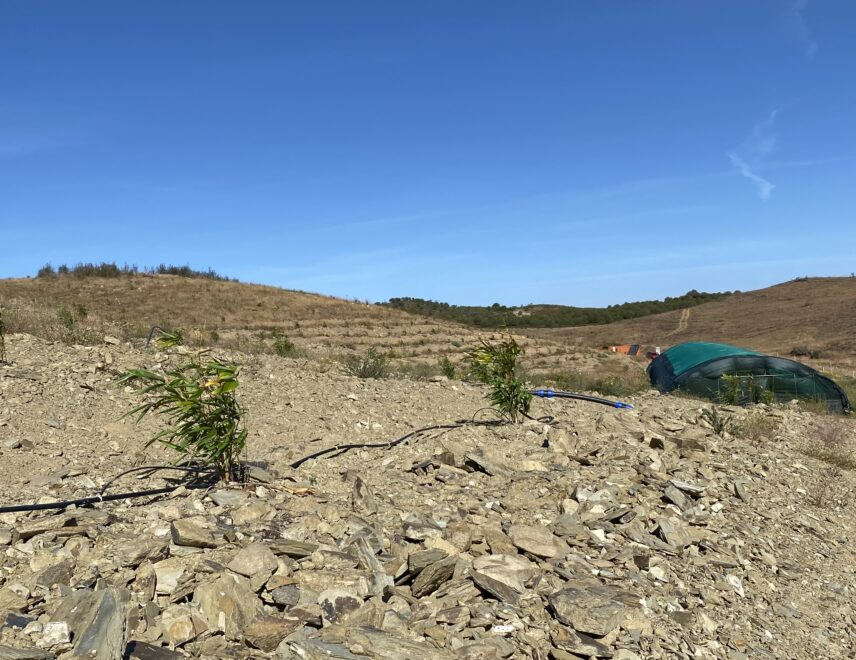
Bamboo plantation near Alcoutim, Portugal
Recently, we signed an agreement with Hive Energy in the UK, with the aim to expand our forest to cover some 2000 hectares in Portugal, and we are actively looking for additional land. In addition to our work in Portugal, we are active in Belgium, France, Greece Netherlands, Spain and the UK and we will reach out to other countries soon.
One of the fundamental requirements to reach our ambitions is to have the planting material, and we are fortunate that we work with Vista Verde, one of the largest bamboo nurseries in Europe, as a partner in our operations.
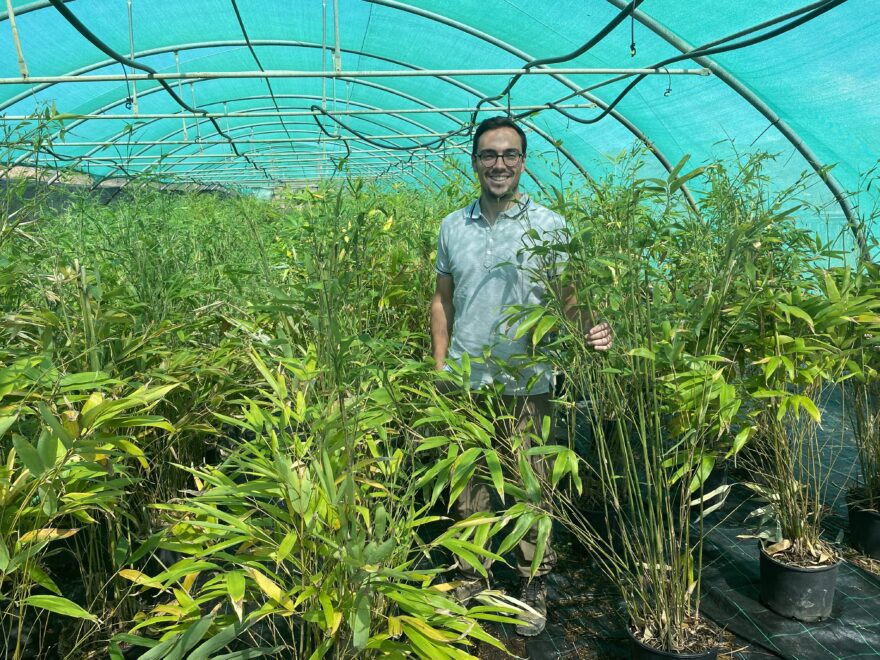
Planting material from Vista Verde, with Joao Ludovic from Bamboologic
The other key requirement, especially during the first years of establishment is water for irrigation. With southern Europe experiencing more and longer dry periods, adequate water supplies are critical, and we have both surface reservoirs and boreholes. Our aim is to prove that bamboo will grow even in the unproductive soils and the harsh climate of southern Portugal. Once the bamboo has established itself, the need for irrigation will be very limited, although we may need to add some water during very dry periods in the summer.
We know that bamboo thrives in the area, as we are already managing plants that have been in the soil for a number of years, and we are already able to harvest the first poles from these forests. The Vidigueira bamboo field produces small culms, but we also have access to mature stands of bamboo further north. We are also helping local farmers who are interested in planting bamboo, and we have met several farmers who planted bamboo some years ago (to produce sticks for vineyards, or supports for fences), and are now looking for ways to get their poles into the market. This is one of our ways of helping local farmers, and it provides us with an additional source of raw material.
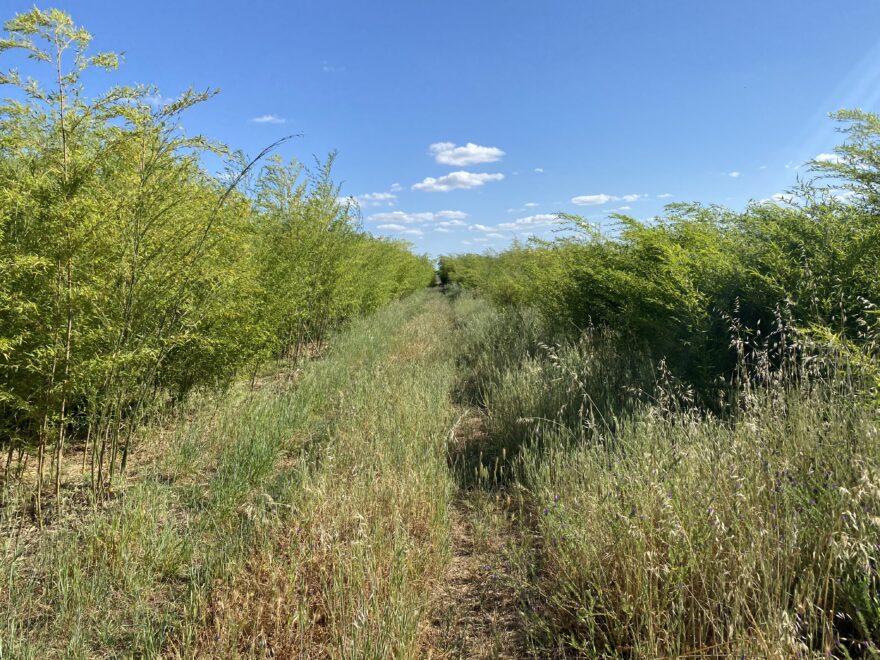
Vidigueira bamboo field
Developing a bamboo industry in Europe
But, just getting poles is not the main objective of starting an industry-scale bamboo planting project, although this is the main product we are supplying at present. We are looking at future manufacturing opportunities, based on the enquiries that we have already received from several directions.
The first of these was the unexpected request from local Asian restaurant owners to allow them to collect bamboo shoots from the healthy bamboo stands. Bamboo shoots are considered very healthy, high in proteins but low in calories and cholesterol. Fresh bamboo shoots deteriorate rapidly, and although canned or dried shoots can be purchased in Europe, there are no fresh shoots on the market. Yet, there is a growing market for such healthy, energy-rich food, and we expect to have many more requests for bamboo shoots in future.
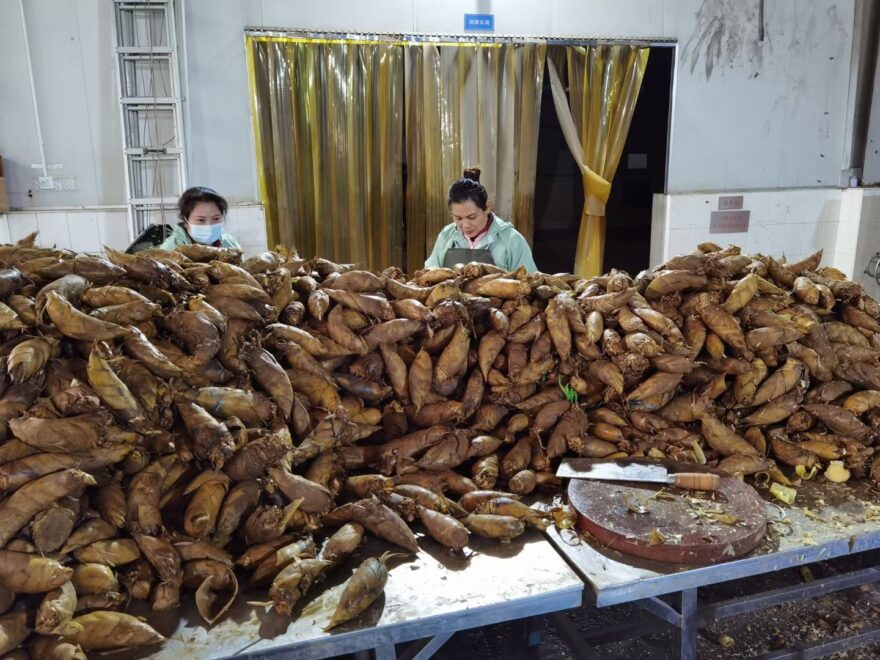
Bamboo shoots in China – photo by Charlotte King
Bamboo poles will continue to be one of our lines of production, as there is a growing interest in using natural bamboo for construction and the design of artistic creations all over Europe. After the Imagine Bamboo Summit in Birmingham in July 2022, we are working with Imagineer Productions (https://imagineer-productions.co.uk/) and the No Fit State Circus in the UK (https://www.nofitstate.org/) to explore opportunities for bamboo in the West Midlands. The circus is particularly interested in the flexibility of bamboo, and how it can be used during their performances.
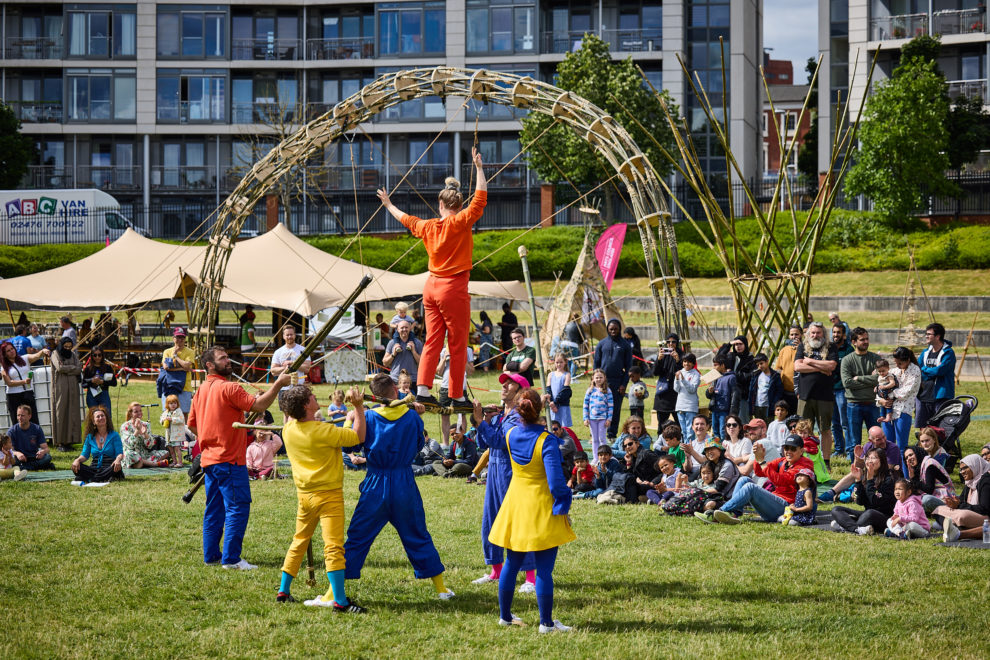
No Fit State Circus at the Imagine Bamboo Summit in Birmingham in July 2022
We are planning to establish a pre-processing facility in Portugal, so we can clean and treat the poles, and we can produce slats for further manufacturing. We have had enquiries about the supply of construction panels, and raw material for strand-woven bamboo beams. Strand-woven bamboo is produced by pressing bamboo fibres together under high pressure, and by adding high temperature, the product can be made weatherproof for outdoor use. It is the easiest way to use bamboo fibres for the production of construction and interior design panels, and the end product is highly prized by architects and engineers. We are in discussions with several companies that are looking for products made from European bamboo.
We are also in discussion with a school furniture supplier in the Netherlands about using bamboo for school desks and chairs. Interestingly, the Philippines has a Presidential Decree that 25% of all school furniture must be made from bamboo. Philippines has some 200,000 Ha of natural bamboo, so it is more relevant there, but the Netherlands has a long experience with furniture production and weaving with willow, so the idea of using bamboo is not “off the wall”. Together with the ArtEZ University of the Arts ( https://www.artez.nl/en/) we are testing the various applications and designs to see how European bamboo performs, and how it compares to the imported bamboo from Asia.
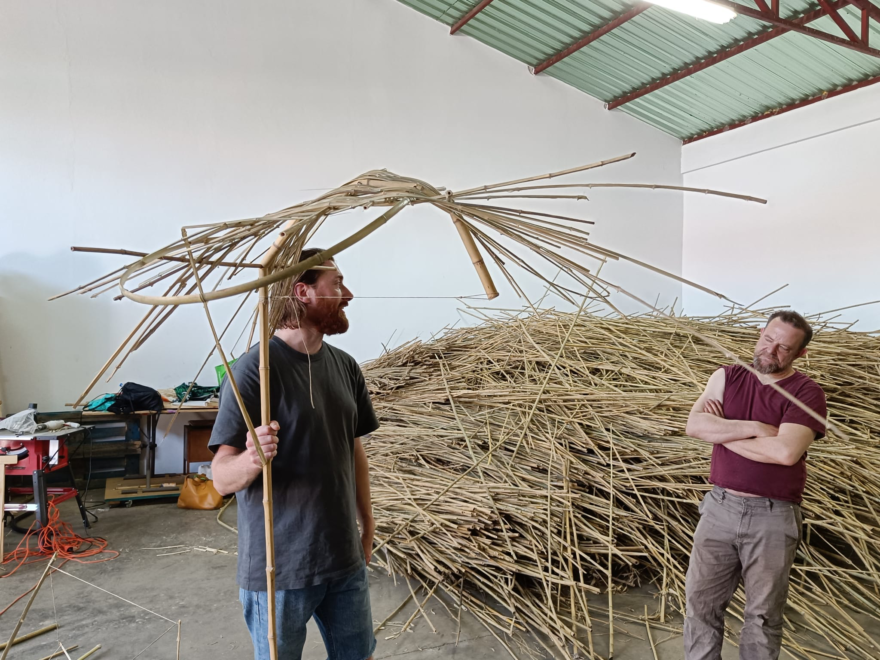
Testing European bamboo by ArtEZ University of the Arts
We are very happy that we are working with Bamboo Belgium, who manufacture their clothes in Portugal. Spinning, weaving, dyeing and stitching bamboo clothing all takes place within a radius of 80 km in northern Portugal. Only the bamboo pulp is purchased in China, and they would like to have a supply from Europe.
Currently, most bamboo cloth is made from viscose. First the cellulose is released by crushing the bamboo stalks. Then, a chemical process transforms the cellulose into viscose pulp. This involves carbon disulfide, sodium hydroxide, and sulfuric acid. The bamboo pulp is filtered, washed, and spun. Once it has been spun, the threads can be woven to create bamboo viscose.
Any spillage from this process would result in serious pollution, and there are questions whether bamboo viscose can be termed eco-friendly or sustainable. Modern producers operate a “closed-loop” system, which recycles the water and recaptures chemicals associated with processing bamboo stalks, but there is always a risk of spillage, and there have been many cases where stated closed loop production was actually leaking. There are other, environmentally safer pulp production methods, but they are not yet applied at industrial scale. We are therefore working with our business partners and universities to develop an alternative method to produce sustainable pulp from European bamboo in large quantities.
We also are also in discussions with a UK-based bamboo paper manufacturer to use the bamboo pulp for the production of tissue paper and other such products. When I lived in China, I visited a large paper mill that was supplied by hundreds of local farmers living in the district around the factory, but this is not yet possible in Europe. I also visited an artisanal paper factory, which did not use any chemicals to produce the pulp. This could be an opportunity for small scale development in Europe, making paper for special purposes.
The UK company we are talking with buy their raw material in China at present, and they are keen to diversity and engage with a local supplier. Again, we are waiting for the new plantations to mature, so that we can supply the required amount of pulp for paper manufacturing.
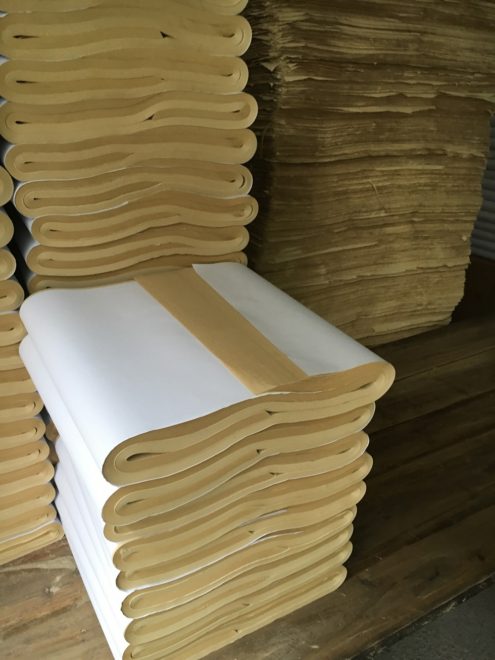
Artisinal bamboo paper produced in China
Bamboo fibre is a promising alternative to glass fibre or carbon fibre, and we are talking with several European companies that use bamboo for high performance bamboo fibre composites. Currently, they get their raw material from Asia, but they are keen to diversify and obtain bamboo grown in Europe.
These composites are used in the automotive industry, sports and health services, but many other high-value development opportunities exist. One of the critical factors is the supply of good quality raw bamboo, and we will be able to do so when the plants in Portugal are mature.
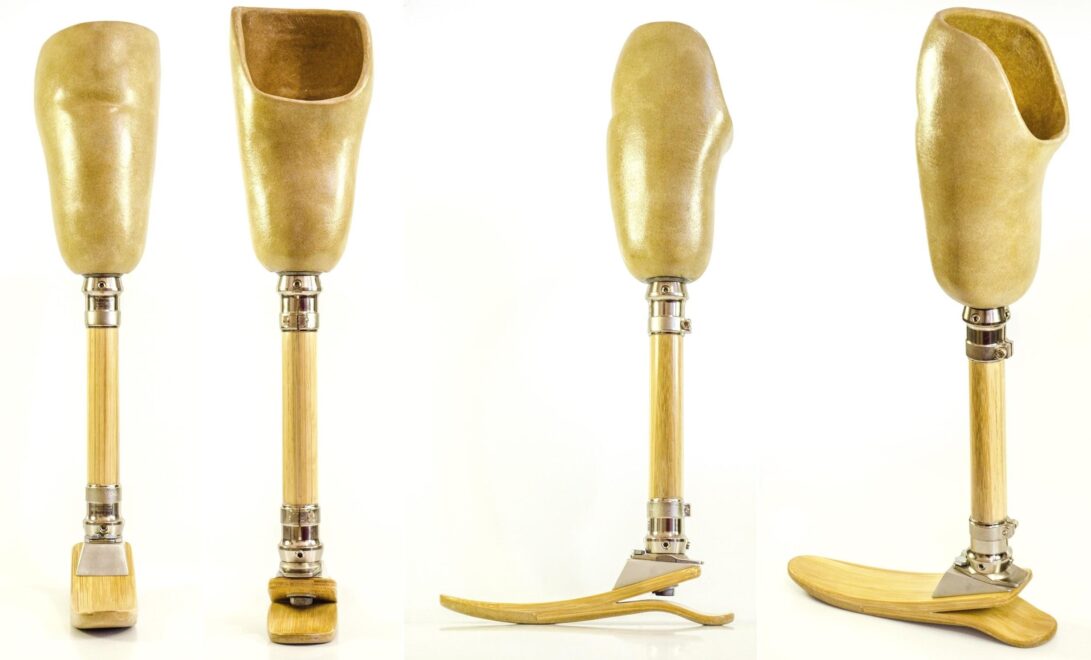
bamboo prosthesis. Photo by Bamboo Hub, Brazil
Finally, we are considering how to use the waste and low-value parts of the bamboo, and there is interest to use bamboo for energy, instead of wood pellets. There is research that confirms that bamboo can be used in wood-fueled power supplies, and we are working with European energy companies that are testing how bamboo performs for energy, and how we can use it to produce power and heat. One of the bi-products is biochar, a form of charcoal that can be used as agricultural fertilizer.
Added environmental advantages
There are additional advantages to planting bamboo, which are not directly related to the manufacturing of products. The landscape in southern Portugal is rather bleak. There is very little natural vegetation, and most of the planted trees are pine trees or eucalyptus. The diversity of natural resources is very low. In contrast, our bamboo field in Vidigueira provides shelter for a range of animals, which we know because we find different droppings, and there is active birdlife all year round. We are carrying out biodiversity surveys, and already identified more than 70 different species of flora during a first rapid survey.
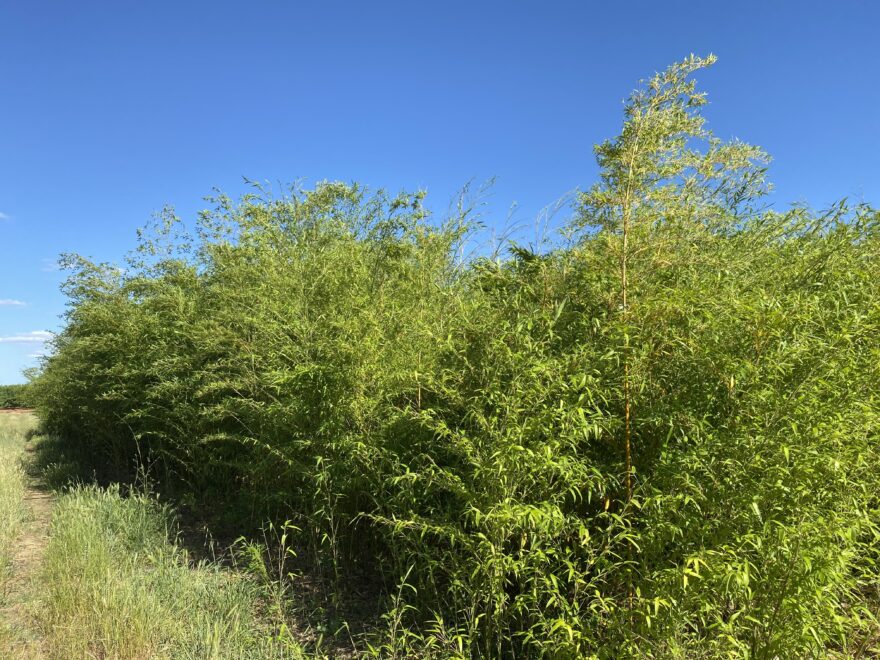
Vidigueira Moso bamboo field
In France, bamboo stands are used in a number of local communes to filter waste water, and there is also some evidence that bamboo can be used to clean up polluted soils. The latter is particularly interesting for some of the mined areas in Europe, and we are exploring the possibilities of getting involved in brownfield restoration in Greece and the UK. We are also working with farmers in the Netherlands with the aim to help reduce nitrate pollution in agricultural land and ditches. Nitrate pollution is a major issue, and the Ministry of Agriculture is exploring many options to help reduce the problem. Planting bamboo is one potential solution, and we are testing this in several locations.
The most obvious added advantage that has become very topical is the use of bamboo to sequester CO2 and the possibility of selling carbon credits for this on the open market. This provides bridging funding for farmers who want to move into bamboo cultivation, as we found out recently from a farmer in the Netherlands. (https://youtu.be/Rd-qeWGOil4)
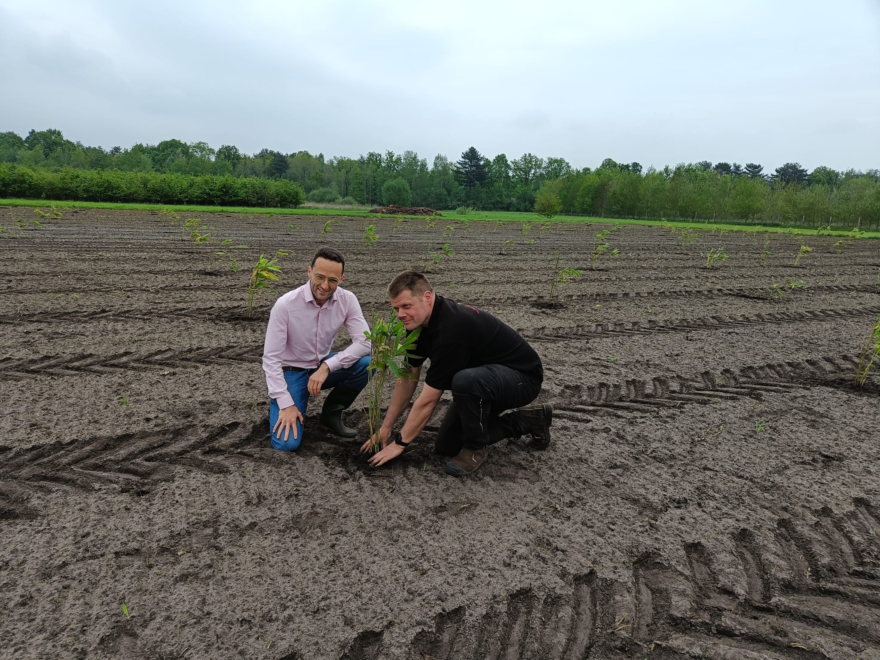
Potato farmer in Noord Brabant, the Netherlands planting bamboo
Conclusion
In conclusion, there is a real opportunity for bamboo in Europe, both for environmental reasons and for the development of a local bamboo industry. There are several development trajectories that are no longer wishful thinking, but that are looking at industrial scale economics. An industrial expo, like the European Bamboo Expo in Dortmund is an excellent platform to showcase what is going on, and networking is critical in the development of a thriving European bamboo industry.
The key for a thriving bamboo industry in Europe is to plant enough bamboo to supply the market, and we hope to work with many other players in Europe to establish a reliable supply chain. The constraints are the availability of large parcels of land, a secure source of planting materials and water for irrigation to establish the new plantations. Finance is, of course, critical as well.
One of the criticisms of planting bamboo in Europe that is often raised is the concern about introducing non-native species. While I fully agree that using alien species in a natural forest ecosystem should be avoided, planting bamboo as a crop on degraded land is a different story. After all, potatoes came from South America and onions came from Central Asia, and now most people would consider these to be European food staple.
Another issue that is often mentioned is the fact that a bamboo plantation may not have any biodiversity. My recent visit to the bamboo woodlot in Vidigueira in Portugal convinced me that a well planned and managed bamboo field can provide both a home for a variety of animals, as well as a base for a rich flora. We also know that bamboo creates a healthy organic sub-soil, and it would be very interesting to carry out soil biodiversity assessments of a mature bamboo forest. But – bamboo should be used as a crop to restore degraded land; natural healthy forests should not be cut to provide land for bamboo.
Finally, we need to provide more information, and explain the benefits of bamboo, but I see many positive signs, and I look forward to supporting a thriving bamboo industry in Europe.
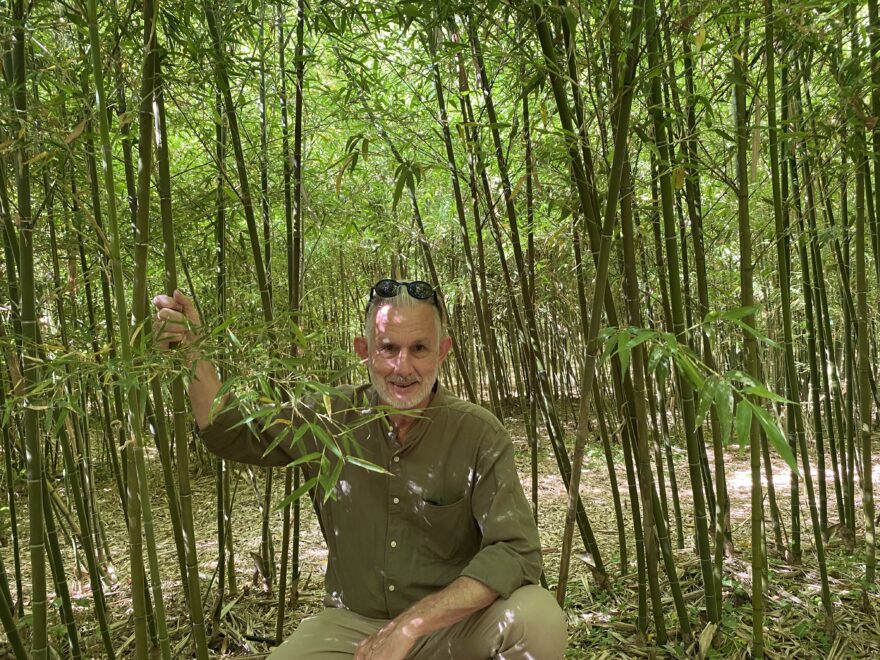
Vidigueira Moso bamboo field

0 comments
Write a comment